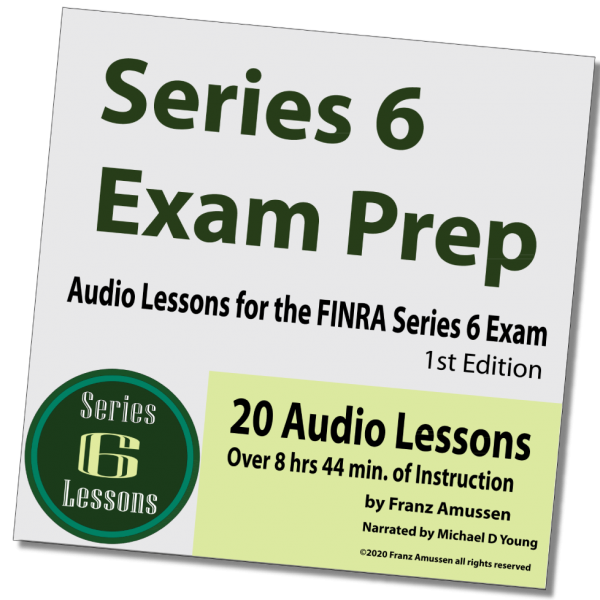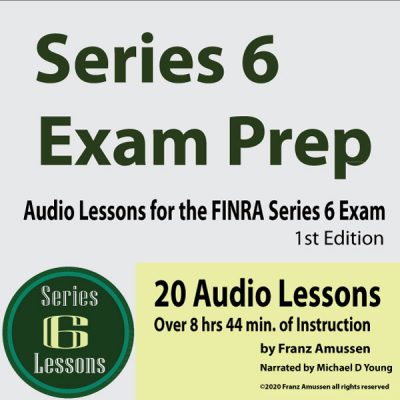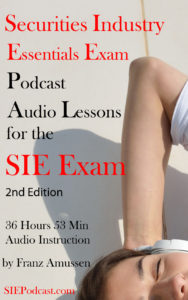Series 6 Lesson 5
Lesson 5: Unit 1, Part IV
In Series 6 Lesson 5 we cover Debt Securities
Debt Securities (Bonds)
Companies let other people buy up their debt without having to give them voting rights in their company or paying them dividends. You simply have to pay them the interest on the loan and make regular payments. Unlike stock, the people who buy these are not part owners of the company. They are simply lenders looking to make some money on interest. The bond is bought, all the money is paid upfront and all the money is due again with interest by the end of the term/maturity date. Most bonds have a par value of $1,000.
A company’s common stock + preferred stock + debt securities = capital structure
Annual dividend divided by the market price = yield
Inverse relationship = when one thing goes up, the other goes down, such as if a price goes one way, the yield goes the other way.
Bond’s prices can fluctuate, regardless of the face value. This happens because the interest rate on the bond will fluctuate throughout the life of the bond. You want to hold if the rate is above the coupon rate (printed rate) and you might want to sell if the the rate falls lower.
Current Yield = Annual interested divided by the bond price
A bond that is trading below the par value is called a discount bond. A bond that has a current yield that is lower than the coupon rate, you have a premium bond.
Bonds have different investment grades, given on two systems: Standard and Poor’s and Moody’s. In S and P’s, the best you can get is an AAA rating and the worst you can get is a BBB rating. Anything lower than that is a called a junk bond. In Moody’s system, the highest rating is Aaa and the lowest Baa. Anything lower than that is also a junk bond, that presents a significant risk. There would be substantial doubt as to the soundness of the company’s finances and it probably would not be a good investment.
Series 6 Lesson 5 Many companies create a sinking fund, which is a low-risk, slow-growing fund that provides security for bonds that it issues. This helps increase its bond rating, which encourages more people to invest.
Secured bonds are backed up by specific assets or collateral. If the person who took out the bond defaults, then the borrower can repossess the collateral.
Buying a bond that is only based on good faith means that you are buying what is called a debenture, which is considered a general creditor that is below secured bondholders in getting money paid out if a company has to liquidate. You can also be a subordinated debenture, which has an even lower claim on corporate assets.
An income bond is a kind of bond that only pays income if a company has income. They are often created by companies coming out of bankruptcy and offered an attractive discount in order to offset their risk.
A convertible bond can be converted into a certain number of shares of the company’s common stock at will. When they choose to do that, they get a conversion price, which is how much each share of stock will cost. They can then take the face value of the bond and purchase an according number of shares of stock with that money.
We should also Point out that if you are interested in the Professional education bundle it is available HERE
And if you are interested in our Series 7 Lessons they may be found HERE
Series 6 Lesson 4 is about Investment Vehicles
Podcast: Play in new window | Download (Duration: 10:51 — 4.5MB)
Subscribe: Apple Podcasts | RSS | Subscribe to Podcast




